Peperomia is one of the most beautiful house plants you can have a hand on. It genuinely thrives when you give it the proper attention. It may grow both indoors and outdoors, depending on the environmental conditions. The plant’s glossy green leaves are broad and heart-shaped, and it stays compact, making them ideal for tiny areas and a great addition to your indoor plant collection. In this article, you will learn about my peperomia polybotrya care tips.
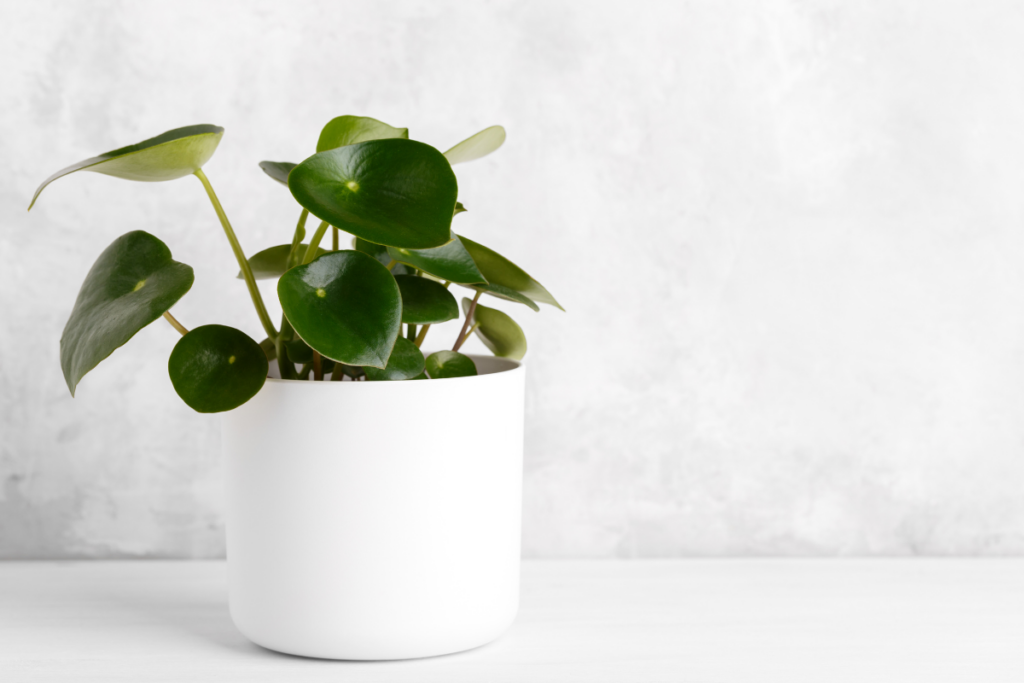
Coin Leaf Peperomia, also known as Raindrop Peperomia, Coin Plant, or Chinese Money Plant, is a hardy plant. The leaves are not only shaped like water droplets, but they are also transparent. Since it can tolerate a wide range of temperatures and seasons, it’s a very easy plant to take care of.
If you want to get a raindrop plant into your home, you need to learn a lot more about it. Worry not! This article will help you jumpstart your peperomia journey.
Peperomia Polybotrya Profile
General Information
Peperomia polybotrya is a little peperomia species that thrives as a low-maintenance houseplant. The plant has heart-shaped, succulent leaves and only grows to a maximum height of one foot. It is also known as Raindrop Peperomia and Coin Leaf Peperomia. This tiny plant is endemic to South America’s tropical regions, including Peru and Colombia, where many kinds thrive in tropical environments.
This upright plant grows to fifteen inches in maximum height. It is a compact plant depending on how much sunlight it receives. Peperomia polybotrya isn’t used to getting much direct sunlight in its native environment. Because it thrives in forested areas and does not grow very large, taller trees will impede too much sunlight.
They are sometimes called Chinese money plants because they are often misidentified as the Pilea peperomioides.
Etymology
Its botanical name is quite descriptive. You might be wondering why “peperomia” means “similar to pepper” and “Polybotrya” means “many.” The leaves of Peperomia plants begin to grow in the shape of slender shoots that resemble peppers. Polybotrya refers to the fact that it grows in the wild.
Flowering

Green-tipped blooms are another feature of the Peperomia polybotrya. From the crowns of the stems, they grow in clusters. Most people appreciate the pleasant aroma created by the plant’s blossoms. The blossoms are long, slender stalks that are frequently green or brown in color and don’t seem like flowers.
Unfortunately, the blossoms do not stay long. Peperomias blooms are not particularly showy, despite their uniqueness. Blooming might be unusual in a household environment.
Season Of Interest And Purchasing
It’s a great time to increase your Peperomia polybotrya in the spring or summer time. If at all possible, prevent propagation throughout the winter. On the other hand, this plant likes a cool, humid climate but blooms only in the summer.
Peperomia is a low-maintenance plant that doesn’t require much of your time to grow and can be a charming addition to almost any location. It only grows slightly more than one foot tall, making it a perfect houseplant.
Growth
As previously stated, one of Peperomia polybotrya’s natural characteristics is that it does not grow excessively tall. However, the typical height range is 8 to 12 inches or a maximum of roughly 40 cm.
Though some of them may be able to grow up to a couple of feet in length, the plant’s short stature makes it perfect for balconies, pots, and small indoor settings. It’s the ideal size for a tiny house.
Peperomia polybotrya Overview
| Scientific name | Peperomia polybotrya ‘Raindrop’ |
| Common name/s | Raindrop peperomia, Peperomia Raindrop, Coin leaf Peperomia |
| Family | Piperaceae |
| Growth Habit | Herbaceous, Succulent-like |
| Height and Spread | Can grow up to 12-18 inches tall, and three feet long |
| Classification based on life cycle | Perennial |
| Origin and Distribution | Originates from South America, specifically Columbia and Peru |
| Climate Zone | Generally mild to warmer climate |
| USDA Plant Hardiness Zone | USDA Zone 9-13 |
| Color | Thick, succulent, evergreen, heart-shaped leaves with a dashing white dot at the center |
RELATED: 11 Outdoor Foliage Plants To Arrange Your Garden Like A Professional Landscape Designer
Care Tips
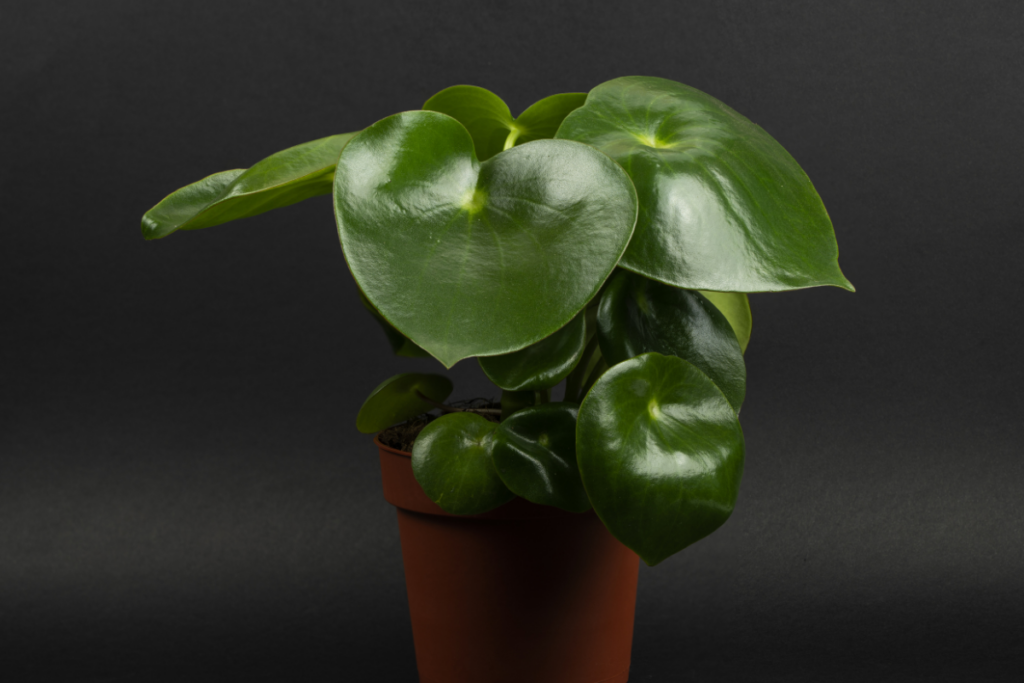
Light Requirement
This plant may thrive both indoors and outdoors under the right conditions. To keep the plant healthy inside the house, position it near a window with plenty of light. The window should be oriented west or east to get adequate light in the mornings and later in the afternoons.
Direct sunlight should be avoided since it can cause leaves to dry out and even burn. On the other hand, it will turn leggy in very low light. It should be kept in the shade or under the protection of a huge tree when put outside.
Temperature Requirement
This plant thrives in temperatures ranging from 65° to 80°F (18° to 26°C). It prefers chilly, humid conditions but can endure higher temperatures in the summer. Though the plant may survive some direct sun exposure, it is recommended that you keep the plant totally in the shade if the temperature in your location is consistently over 80 degrees Fahrenheit.
Extreme temperatures may cause the plant to wilt. On the other hand, cold temperatures might induce mushy leaves in Peperomia.
Water Requirement
Water the Peperomia polybotrya plant abundantly and at regular intervals during the summer and spring. Water every 1-2 weeks, depending on how dry or wet the soil is. However, be careful not to overdo it. If you’re not sure how dry the soil should be before you water the plant again, try sticking your finger into it.
In other words, one to two inches below the surface of the soil must be dry. If you water the plant more than necessary, you risk root rot and eventually kill it. Watering should be limited during the winter.
Humidity Requirement
Since it is native to tropical rainforests, the Peperomia polybotrya loves to live in a humid environment. It will thrive in an environment that has 60% humidity. On the other hand, it thrives in the reduced humidity of a typical home. Increased humidity, on the other hand, will be beneficial. To enhance humidity, use a humidifier, a pebble tray, or even mist.
Low humidity can alter the rate of water loss from Peperomia leaves via transpiration. Transpiration helps plants move water from the soil to the leaves while also cooling the plant during hot weather.
Soil Requirement
This plant requires well-drained, well-aerated soil. You may use regular houseplant potting soil. Use an equal mixture of peat moss and perlite. Because the mixture is so porous, much of the water drains away. It does, however, stay wet most of the time in order to deliver water and nutrients to the leaves.
In compacted soil, water cannot move freely, oxygen cannot be acquired, and roots cannot form. On the other hand, It is critical to ensure that the soil is well-drained because it is easy to overwater this plant. The Raindrop Peperomia soil must be within a pH range of 5.0 to 7.0, which is acidic to neutral.
Fertilizer Requirement
During the summer, give the plant a monthly dose of balanced liquid fertilizer. Don’t fertilize the plant throughout the winter months because it is dormant during this season. The fertilizer will help the leaves grow stronger and flower more. However, too much fertilizer will destroy this fast-growing peperomia. As a result, compost is chosen since it slowly releases nutrients.
Space Requirement
Peperomia polybotrya is a small, upright plant that doesn’t reach much bigger than 12–15 inches tall, so it may fit into any space. The glossy green, thick, heart-shaped leaves are lovely, and the plant stays compact, making it ideal for tiny areas. Even a small pot can hold your peperomias.
It makes a lovely addition to your indoor plant collection. This is the plant for you if you’re trying to make your living area as tiny as possible. It’ll look great on your windowsill.
RELATED: Alocasia Maharani: Helpful Plant Information and Care Guide For This Rare Beauty
Growing And Planting Tips
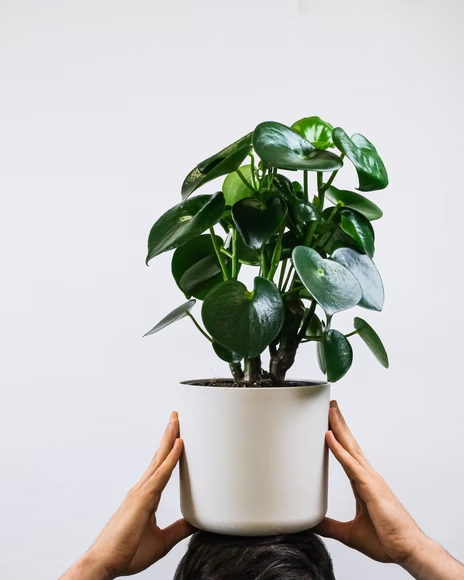
Propagation
Peperomia polybotrya is easily propagated through leaf or stem cuttings in soil or water. The best time to propagate this dainty plant is in the spring when it has a greater success rate. However, because the plant is dormant throughout the winter, avoid propagating it as much as possible. Lastly, always be patient!
WATER PROPAGATION
Cut off a stem with a healthy leaf attached to start propagating a peperomia raindrop in water. Place the cutting in a jar of water, ensuring that one or two of the nodes remain submerged. Keep the water fresh by changing it periodically and keeping it out of direct sunlight. You may transplant the cutting into a pot with new soil once you notice roots sprouting.
SOIL PROPAGATION
To start propagating in soil, use stem cuttings similar to how you would for water propagation. While the plant is rooted, it is critical to maintain high levels of humidity. In a transparent plastic bag, wrap the plant.
Once the roots have formed, the plastic covering may be removed. Continue to look after it until new growth appears. Keep your plants away from the sun and maintain moist but not damp soil.
Leaf cuttings can also be used to propagate peperomia plants. The procedure is similar to stem cutting, except that you just need to clip off leaves with little stems and plant them. Use the same soil mix you are using with your mother plant.
Pruning
The Raindrop Peperomia can withstand harsh pruning and will encourage new growth. Pruning is frequently done to fix the plant’s uneven shape and form, which can be caused by growth or a lack of enough light. When pruning, use clean shears to avoid infection of the plant.
Also, If any leaf or vine becomes afflicted with pests or diseases, pruning is required and can be done at any moment to preserve the plant’s other portions. Pruning in the early spring or late winter will give the plant enough time to bloom.
Potting And Repotting
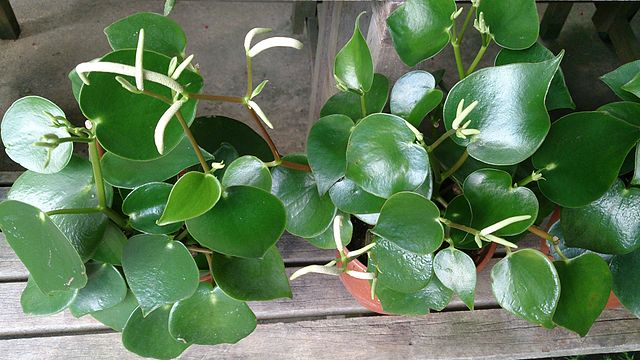
The Raindrop Peperomia rarely has to be replanted. Polybotrya can live for a long time. It may live in a tiny pot for years once it has formed a robust root system. It is recommended that repotting be done every two to three years. Repot in mid-summer to give the bloom ample time to recuperate before the dormant winter overwhelms it.
If pieces of your polybotrya’s roots start sticking out through the drainage holes, it’s time to transplant it. Make sure your pot has a drainage hole, and that excess water may flow freely.
Peperomia Polybotrya Care
| Light | Full sun to partial shade |
| Temperature | Intermediate to warm, 65-80 degrees Fahrenheit |
| Water | Once a week, increased in summer, decreased in winter |
| Soil | Fertile, well-draining, well-aerated mix |
| Fertilization | Regular household fertilizer, once a month |
| Space | Minimal space needed |
| Propagation | Via water and soil propagation |
| Blooming | Rarely blooms, enough sunlight and maturity needed |
| Pruning | Occasional pruning |
| Potting | Regular potting mix or succulent mix, use of perlite and horticultural sand |
RELATED: Philodendron Pink Princess: The Perfect Care, Propagation, and Watering Guide
Problems And Troubleshooting
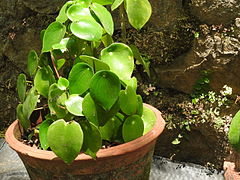
Overwatering
Overwatering is a common issue that can be fatal to your houseplants. Droopy and discolored leaves, damp and moldy soil and mushy brown roots are indications of an overwatered peperomia. If you ignore the signs for a lengthy period of time, the plant will die.
To save an overwatered peperomia:
- Stop watering it and let it have some time to recuperate.
- Prune the plant’s damaged roots and repot it in a new container with good drainage and a light soil mix.
- Keep your peperomia in a light location; don’t water it if the soil is still moist.
Underwatering
Dry soil and drooping foliage indicate that you are providing your Peperomia with insufficient water. As a result, be mindful when watering your plants. An under-watered plant will have wilted, dry, wrinkled leaves with crispy tips. The soil would be dry to the touch and generally dry to the pot’s bottom. The roots will be unable to reach and supply the plant due to the dryness.
You need to test for moisture to see how dry or wet your plant is. Put your finger 2 inches into the soil. If it is not dirty, it means the soil is dry. If your plant is experiencing stress from drying out, soak it for a few minutes in a container filled with water or until the soil swells and seems moist. After that, remove the pot from the container and drain any extra water through the drainage holes.
Nutrient Deficiency
Curling leaves are another symptom of nutrient deficiency. This is a bit rarer, although it is typically caused by nutritional insufficiency. You can consider a nutrient deficit if you haven’t been feeding your plant or repotting it in fresh soil. Peperomias aren’t heavy feeders and don’t require frequent fertilization, but they do deplete the soil’s nutrients over time.
Begin fertilizing your peperomia plants regularly. You may use any general-purpose houseplant fertilizer. Apply the fertilizer less often or dilute it more than the label says.
Flowering Problem of Coin Leaf Peperomia
Most of these plants prefer their beautiful leaves rather than their unimpressive blooms. Peperomia plants aren’t particularly well-known for their blossoms, which resemble a bushy spike or tail.
When grown as houseplants, Peperomia rarely blossoms, but when it does, the petals are short-lived. When the blossoms start to fade, be sure to let them decompose immediately; otherwise, it will cause trouble for your plant.
Peperomia Polybotrya Pests and Diseases
| Common Pests/Diseases | Symptoms | Treatment and Prevention |
Common diseases include crown rot, stem rot, root rot, leaf spot, fungal diseases, and Xanthomonas infection | Yellowish rimming around black or dark brown spots on leaves | Avoid overwatering. Keep soil dry. Avoid too high humidity.Proper ventilation is needed around the plant. Remove infected parts of fungal infections to avoid spreading. |
Common pests include mealybugs, spider mites, aphids, and scales | Visible insects on the surface | Spray plant with warm, soapy water. If infestation is present, use insecticide or neem oil. Use diatomaceous earth. |
Problems with People and Animals
You don’t have to be concerned about Peperomia polybotrya. It’s non-toxic, making it an excellent indoor plant.
Raindrop Peperomia Plant Meaning And Symbolism
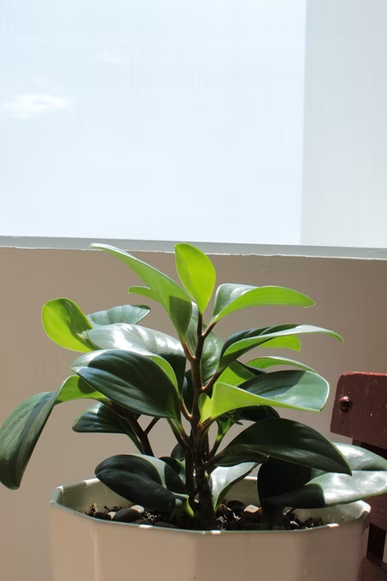
In Brazil, peperomia is said to bring good fortune. The name comes from the Greek words’ peperi’, which means ‘pepper,’ and ‘homoios,’ which means ‘resembling.’ It is presented there as a soothing gift that indicates “everything will be fine.”
| General Meaning | Good fortune |
| Symbolism | Resembling hope, assurance that everything will be fine |
Landscaping And Gardening Ideas
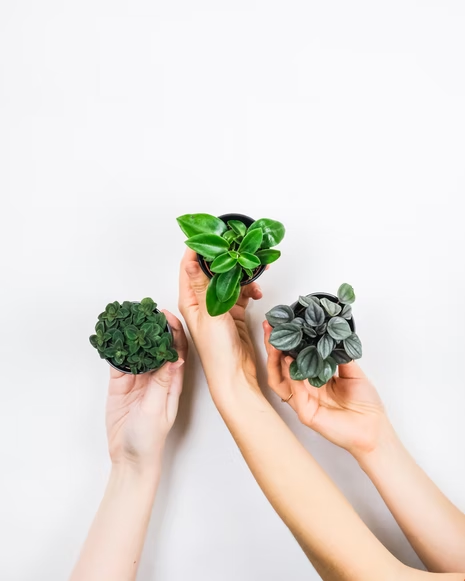
Companion Plants
Plants with similar care requirements, such as other species of peperomias, can serve as companion plants. You can plant your Peperomia polybotrya with Christmas cactus, peace lily, and Dracaena. Another alternative is to choose a blooming plant to contrast the Peperomia polybotrya’s all-green tones.
Landscaping Ideas
Peperomia polybotrya will genuinely shine when grown inside. The plant’s short height makes it perfect for balconies, pots, and small indoor settings. They look great on a windowsill with an indoor flower garden, making them an excellent houseplant. If you want to grow it inside, put it near a window that gets bright, indirect light, such as an east or west-facing window.
| What to plant with | Other peperomias, Philodendrons, and other tropical plants such as Christmas cactus, Peace lily, Dracaena |
| What NOT to plant with | Basically nothing |
Conclusion

Peperomia Polybotrya is a lovely small plant. It is endemic to Columbia and Peru and is also known for many names such as Raindrop Peperomia or Coin Leaf Peperomia. The thick, glossy green leaves that are heart-shaped are beautiful. The plant stays compact, making it ideal for small spaces.
Aside from that, it’s a relatively easy-to-maintain plant that can withstand a broad range of temperatures and seasons. It makes a lovely addition to your indoor plant collection.
Frequently Asked Questions
How do you care for a Peperomia Polybotrya?
The Peperomia Raindrop is a low-maintenance plant. Little care or attention is needed for this plant to thrive. However, make sure you give your plant the right environmental conditions such as light, watering, humidity, soil, etc.
Does Peperomia need sunlight?
Yes! Like all plants, Peperomias also need sunlight to photosynthesize or produce food for their nourishment and growth. Peperomias thrive in filtered bright light. However, make sure not to put your plant in direct sun to avoid burning the fleshy leaves.
Is Peperomia Raindrop succulent?
Yes! Botanically speaking, the Raindrop Peperomia is a succulent. Succulents are characterized by fleshy stems and leaves, which can be found in these plants.
Is Peperomia polybotrya easy to take care of?
Yes! Peperomia polybotrya plants are low-maintenance plants that require little attention and care to thrive. They are suitable for beginners.
Peperomia grow in low light?
Peperomias can grow in a low-light environment. However, healthy, normal growth should not be expected. Low light conditions tend to produce plants with leggy stems, yellowish to white leaves, and broader leaf widths. These characteristics are often seen in plants grown in darker conditions.
Editor’s Recommendations
12 Unique Asparagus Flowers (Including Pictures)
5 Breath-taking Types Of Calathea For Your Private Tropic Corner







